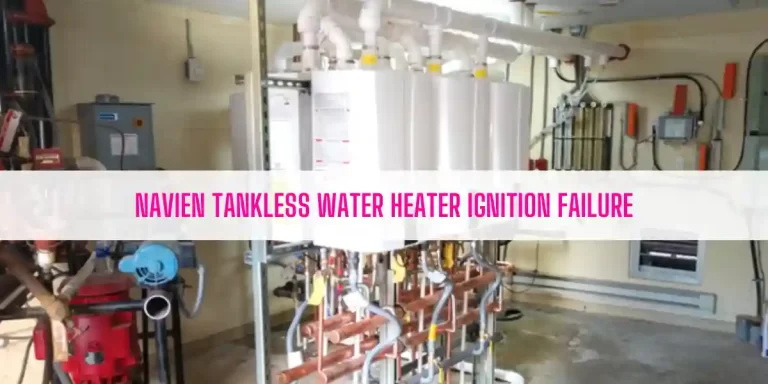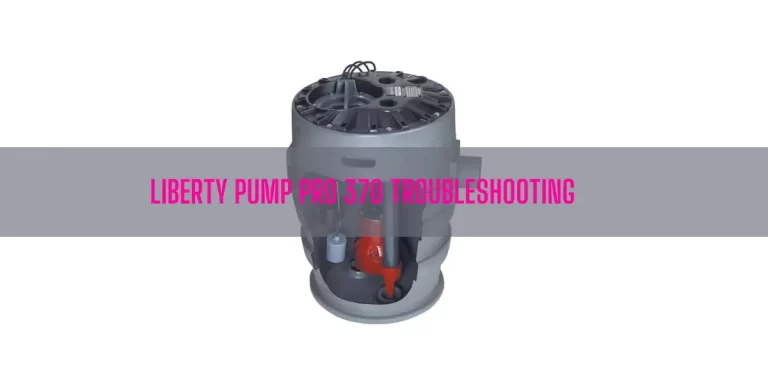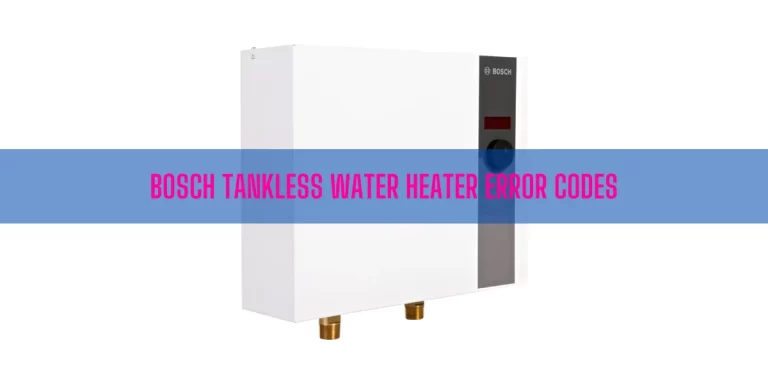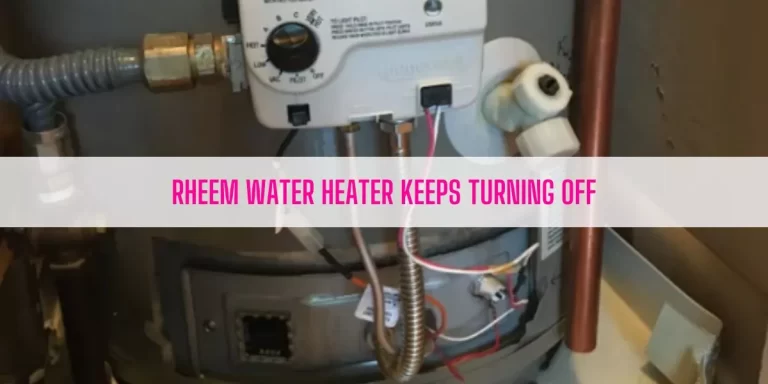This guide on Richmond Tankless Water Heater Troubleshooting describe:
- Common problems of gas tankless water heaters
- Common problems of electric tankless water heaters
- Maintenance tips to avoid common operational problems
To learn how to troubleshoot those issues and resolve them, keep reading till the end.
Table of Contents
- Richmond Gas Tankless Water Heater Troubleshooting [Common Problems]
- Richmond Electric Tankless Water Heater Troubleshooting
- Maintenance Tips To Avoid Common Tankless Water Heater Problems
- How To Purge Air From Water Lines On Tankless Water Heater?
- End-Note
Richmond Gas Tankless Water Heater Troubleshooting [Common Problems]
Let’s go to the step-by-step troubleshooting procedure to resolve the common gas tankless water heater problems:
No Hot Water
Richmond Gas Tankless Water Heater will produce lukewarm or no hot water at all because of:
- You don’t turn on the unit.
- You may forget to open the water shut-off valve fully.
- Hot water faucet is partially opened or it’s closed.
- Frozen water pipe
- Electric supply to the unit is off or the water supply is off.
- Set the temperature too low
- Malfunctioning mixing valve
- Error code displayed on the remote control
- Not enough water demand
- Dirty or restricted water filter
- Dirty or clogged fixture aerator
- Scale buildup in the heat exchanger
- Hot and cold water lines get reversed
How To Fix:
Follow these troubleshooting steps to get hot water from your Richmond Tankless Water Heater:
- Turn on the water heater by pressing the on/off button on the controller.
- Check the water shut-off valve and open it fully.
- Open the hot water faucet completely
- Let the pipe thaw or get a heat gun to thaw the pipe.
- Plug the power cord into the electric outlet or restore the power to the unit at the circuit breaker.
- Increase the temperature setting
- If you install a mixing valve, ensure it’s working properly. Replace it if required.
- Check the Service Error Code chart in the manual.
- Increase hot water flow at the faucet.
- Clean the water filter.
- Clean the fixture aerator.
- Flush the water heater or call a professional to remove scale formation from the heat exchanger.
- Reverse the water lines.
Water Not Hot Enough
The tankless unit will deliver insufficient hot water due to one of the following reasons:
- The temperature may be set too low
- The gas valve is partially opened or it’s closed.
- Low gas supply pressure
How To Fix:
Try these steps to get sufficient hot water from your tankless water heater:
- Increase the temperature. Regarding this, press the Up button to increase water temperature.
- Locate the gas valve and open it fully by turning it counter-clockwise.
- Contact the gas utility company to verify the gas meter and the gas piping size.
Too Hot Water
You will get excessive hot water from your tankless unit if:
- You set the temperature too high
- A small amount of cold water enters through the unit as you don’t open the water shut-off valve completely.
- Small amount of water has been heated.
How To Fix:
First off, check the temperature setting. If you set the temperature too high, decrease it by pressing the Down button. Next, open the water shut-off valve fully to allow more cold water to enter through the unit. Lastly, increase the hot water flow at the faucet.
Fan Operates After the Hot Water Faucet Is Closed
It’s normal. The post-purge cycle removes the gasses for your safety. In short, you don’t need to take any action if the fan continues to rotate once you close the hot water faucet.
Richmond Electric Tankless Water Heater Troubleshooting
Discover the common problems of your electric tankless water heater and the way you can solve them:
1. Water Heater Isn’t Heating At All
Your Richmond Tankless Water Heater will completely stop heating water due to one of the following reasons:
- No power or incorrect wiring
- Flow rate or water pressure is too low
However, if you get no hot water from the unit but the digital display does light up, I bet there is an issue with the internal part.
How To Fix:
No power at the water heater means the breakers at the main electrical panel are On. If needed, flip up the breakers for the water heater to the On position. Don’t forget to replace the breaker if it’s at fault.
Turns out, no power will flow to the unit if you wired the water heater incorrectly. In this case, you must wire the water heater correctly. If needed, take a look at the following wiring diagram:
The best bait can be hiring a certified electrician to wire the unit professionally.
For the second case, if the water heater is not heating but the display light comes on, I recommend you to call Richmond Tech Support for further technical assistance.
2. Water Temperature Isn’t Hot Enough
Though the unit is heating but not getting enough or expected water temperature, the follow culprits are at fault:
- Flow rate is too high
- Crossed wires
- Voltage less than 120 or 240 volts
- Mixing too much cold water
How To Fix:
If the flow rate is too high or exceeds the physical heating capacity of the water heater, you will not get enough hot water. To resolve this issue, reduce the flow rate by installing an aerator.
For the new installation, crossed wiring is a common headache. In this case, have your electrician double check the wiring for proper connections. Alternatively, you can follow the below wiring instructions to check the wiring (if you are electrically inclined):
- Take each wire pair and attach them to one breaker. Be sure that each breaker is connected with one black and one red wire.
- Ensure you use a suitable wire gauge and run the correct set of wire from the home’s main breaker panel to the tankless water heater.
- A separate ground conductor is a must for each incoming circuit.
- Ensure all electric connections are correct and they are secure & tight.
- Don’t forget to purge all the air from water lines before turning on the unit. In the ‘How To Purge Air From Water Lines On Richmond Tankless Water Heater’ below, I will show you that.
Thirdly, heating elements on this water heater are designed for 120 or 240 volts. When used with lower voltage, they will produce less heating power.
And lastly, you don’t need to mix as much cold water with your tankless unit like you do with your conversational water heater. Also, you may have an anti-scald feature on your faucet that’s mixing cold water. To resolve such issues, you can adjust those types of faucets to reduce the amount of cold water mixed.
3. Water Temperature At The Faucet Is Less or Greater Than The Temperature Setting
It actually occurs when:
- The faucets you installed may have anti-scald feature or a tempering valve
- Thermal loss due to long pipe run
- Water temperature at the faucet is too hot
How To Fix:
A faucet with anti-scald feature automatically mixes cold water even when you turn your control lever or handle to full hot. Fortunately, you can adjust these devices to turn off the cold mix completely. You can compensate for this by increasing the setting on your water heater.
Secondly, some heat will be lost as the water needs to travel a distance like from the piping system to the faucet. And this is normal. Fortunately, you can compensate for this by increasing the temperature on your water heater.
And lastly, water temperatures at the faucet become too hot due to too low flow, wrong aerator size or internal part failure. Resolve those issues or call the Richmond Tech Support Team for technical assistance.
Maintenance Tips To Avoid Common Tankless Water Heater Problems
Performing regular maintenance is a must. It will help increase the efficiency of the tankless unit and avoid common operational problems. This chapter will describe how to flush the tankless water heater and how you can clean the water filter.
How To Drain or Flush Richmond Tankless Water Heater?
It’s simple to flush a tankless water heater. To flush the unit:
- Turn off the water heater
- Close the cold water supply valve
- Close the gas valve
- Attach a garden hose to the drain valve
- Drain the water
Read this article on How To Drain Richmond Water Heater to learn how to flush the tankless unit like a pro.
Clean the Water Filter:
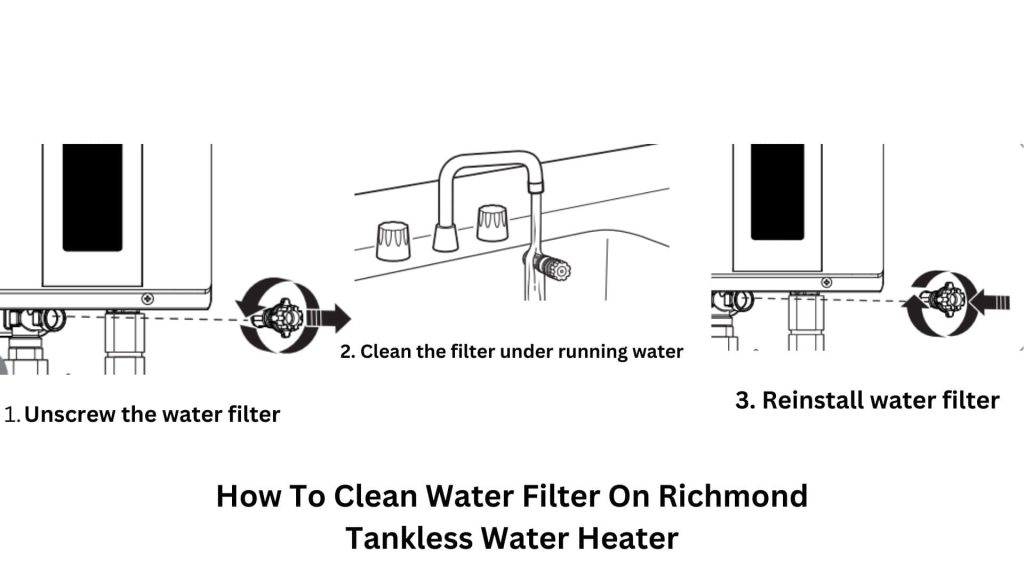
Clean the water filter monthly by following the step-by-step procedure below:
- Turn off the unit and disconnect the electric supply
- Turn off the water supply to the water heater
- Drain the water heater.
- Locate the water filter at the base of the cold inlet line, unscrew it, and slide the filter out of the line.
- Clean the filter under running water. You can use a soft brush to brush away the severe sediment buildup.
- Reinstall the filter in the cold water inlet line and tighten it until it’s snug.
- Turn on the water supply, restore the power, and turn on the water heater.
How To Purge Air From Water Lines On Tankless Water Heater?
To purge the air from water lines, open several hot water faucets and let water run through the water heater for at least 2-3 minutes. This process will help you remove all the air from the water lines.
You must perform this task prior to turning on your water heater for the first time or after every maintenance workflow. Otherwise, it could bring permanent damage to the heating elements.
End-Note
Richmond Tankless Water Heater is a reliable water heater. But it’s not beyond malfunction. For example, ‘water heater isn’t heating at all’ is a common issue that can wrench into work.
Luckily, I described everything you need to know to resolve those common issues. What action you need to take is to follow the instructions I mentioned and bring the unit into working condition.
Or, you can call a certified plumber if the problem seems a bit complex.
Happy Plumbing.
Read Also:

Eric Alvarez is the head of content on LilDutchUncle.Com. He is an HVAC guy based in El Paso, Texas, United States. He obtained his Bachelor of Science degree from the University Of Texas at El Paso. Years of experience in the HVAC field have taught him many lessons, not the least of which is that the value of quality and knowledge far exceeds any promised initial savings. He has a good standing reputation for superior skills in heating, air conditioning, hot water tanks, and indoor air quality systems.
